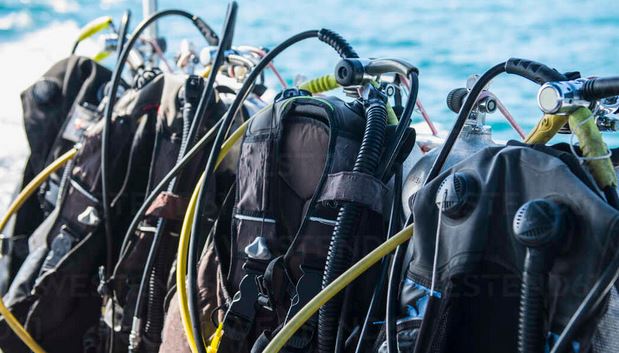
It’s happened to even the best of us from time to time. You think you have everything planned and packed and ready to go and then find yourself out on a boat with a piece of essential gear nowhere to be found!
It happens, but it’s avoidable with a little bit of extra planning and a plan around how to plan! Forgetting things like wetsuits, BCD’s and regulators are rare – these are really your essentials. But when it comes to accessories and bits and pieces, it’s easy to overlook them. Here’s how we recommended not only planning for your dive trip but also how to best store your gear at home, so you’ll never be caught short!
Checklist
It might sound boring but one of the best ways to avoid forgetting items is to lay ALL of your gear and accessories out on the floor. Make a checklist where you itemize every item you own. Laminate and store it with your gear – it will be invaluable later.
Storage Places
Find a place where you are going to store your gear at home. The best place is somewhere cool, dry and dark, such as in the bottom of a wardrobe or empty cupboard. Then it’s simple. Make sure everything is in that one place!
Partner Items Together
Some items make natural storage partners and it’s wise to take advantage of this. Here are some recommendations:
– Hang your wetsuit with your BCD on the same hanger over the top and your regs also looped around. That’s three of your core essentials taken care of already.
– Once fully dried out, store your booties in your fins – one in each so you’ll notice for sure if one is missing.
– Your camera, housing, strobes, batteries, memory cards and chargers should all be in one place too, so you can literally grab that box and go while feeling confident that everything you need is already inside.
– Mask and snorkels don’t need detaching, keep them together and then this is where we move on to “The Box”.
The Box and Pre-attaching Items
– Have a clearly marked box or bag where you keep your more sensitive items that are more likely to be damaged if accidentally knocked. This includes: mask and snorkel, compass and dive computer.
– Accessories: There are two choices here, either add them to your box or fix them to your gear as you would use them so that they are already in place. Examples include storing your SMB in your BCD pocket or having your pointer stick already clipped on to the D-rings of your BCD.
Paperwork
When it comes to paperwork, this is one section that you might want to consider separate. If you have a safety box at home where you already keep your passports and travel documents, it makes great sense to add in your logbook, cert cards and any special diving insurance documents you have too. It’s highly unlikely you’ll forget your passport, so you’ll grab your other items at the same time.
If you don’t have a space already then consider a small travel essentials document wallet where you do keep all of these items together and store it with the rest of your gear. It helps to add some silica sachets to ensure that all of your papers stay crispy and dry. Soggy paperwork is NOT fun!!
Pack from Top to Tail
Having all of your gear stored together and in an organized manner is great BUT there is still room for error – it still needs packing and double checks are essential.
When packing your gear it helps to do it methodically, start from top to bottom or bottom to top. What does that mean? It means using some visualisation techniques. If you are going from top to bottom, visualize what your wear at the top when kitted up – this will usually be your hood or mask and snorkel. Then move down to your regs, BCD, wetsuit, and eventually fins and boots!
As you are placing items into your travel bags, check them off your premade checklist. At the end of the process you’ll see on the list any items not checked off and missing from your bag!
Ready to Travel?
Are you ready for your next trip? Why not start getting organized now? Get your gear out and start by making your check list. Once you are done, begin putting it back into storage in the way described above and you’ll be good for your next trip to see us!
For more information about diving with us, learning to dive or to make a booking, contact us on: info@divenetphil.com or fill out our contact form here.
We are looking forward to scuba diving in the Philippines with you soon!




